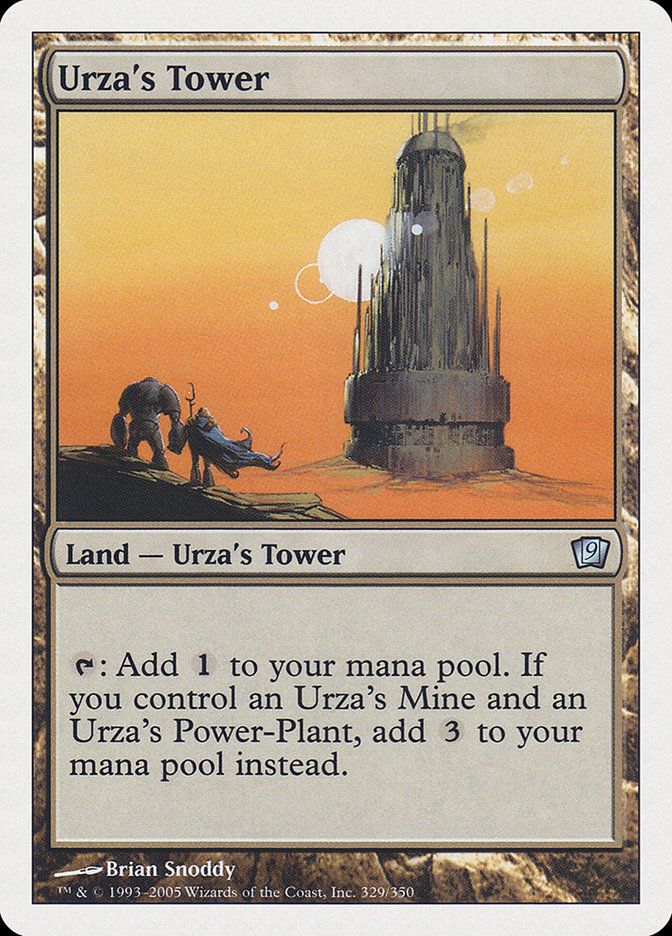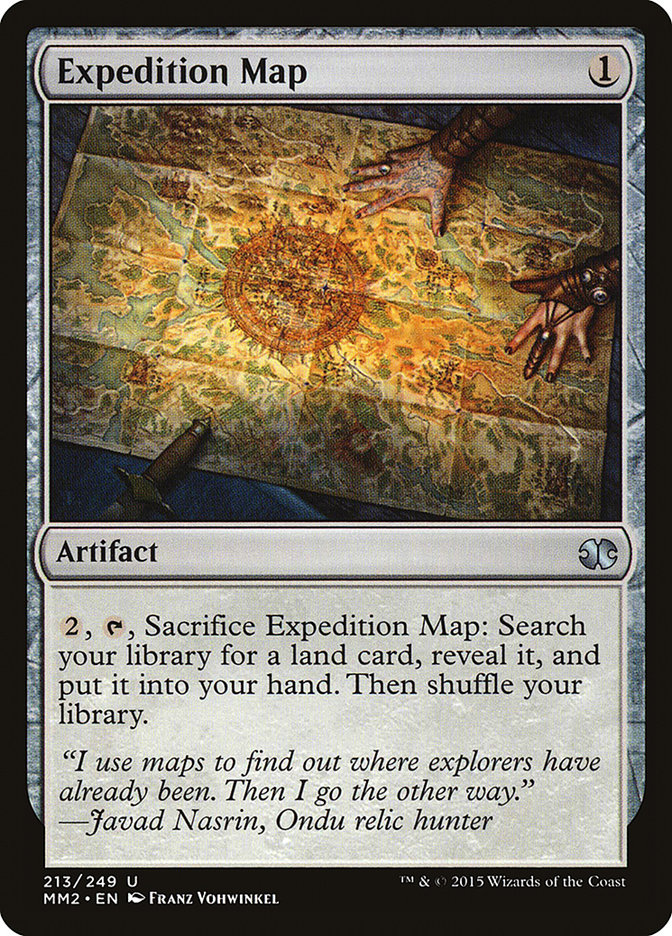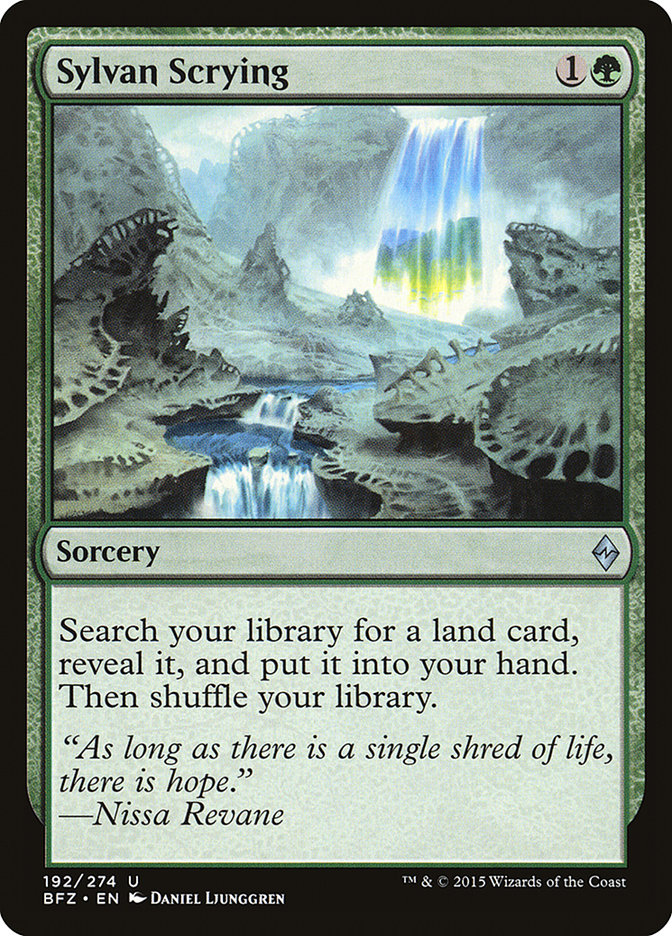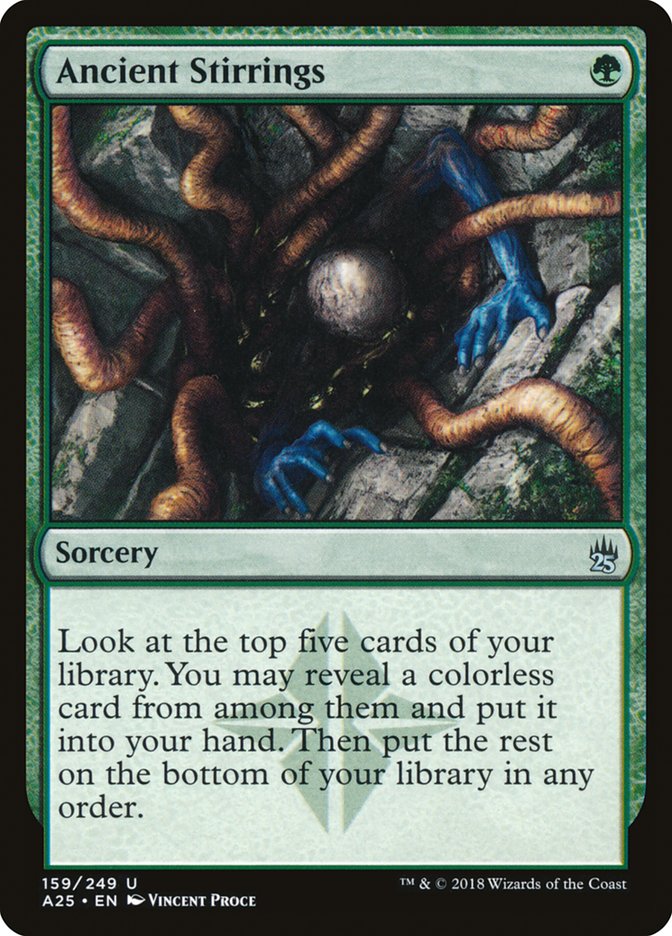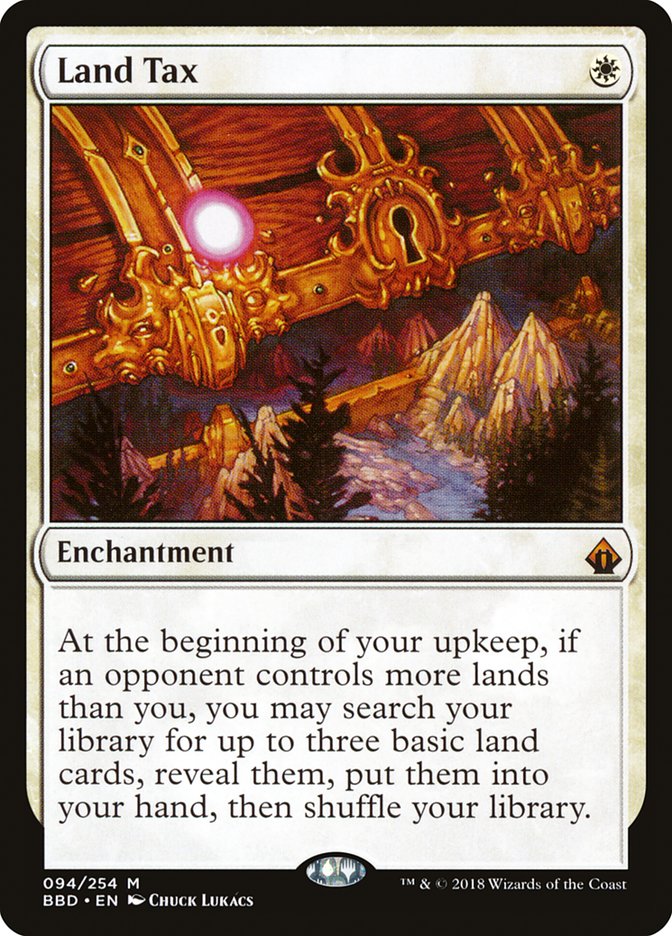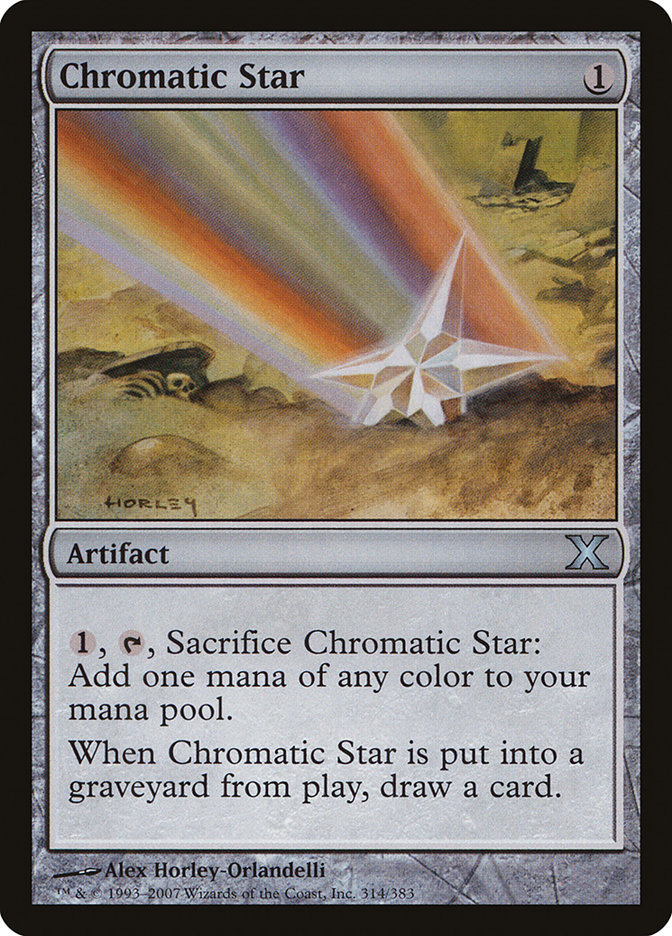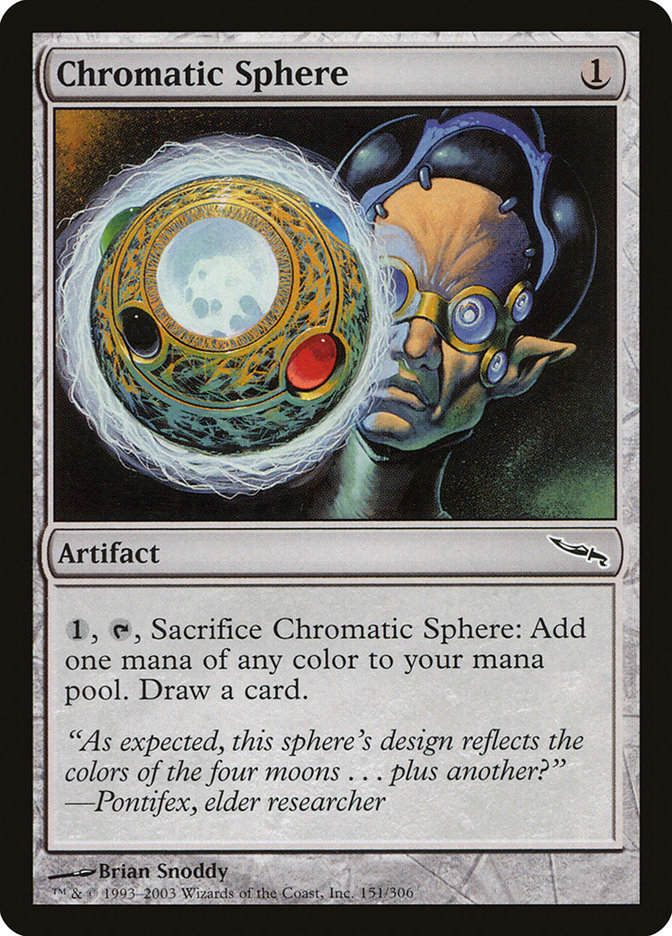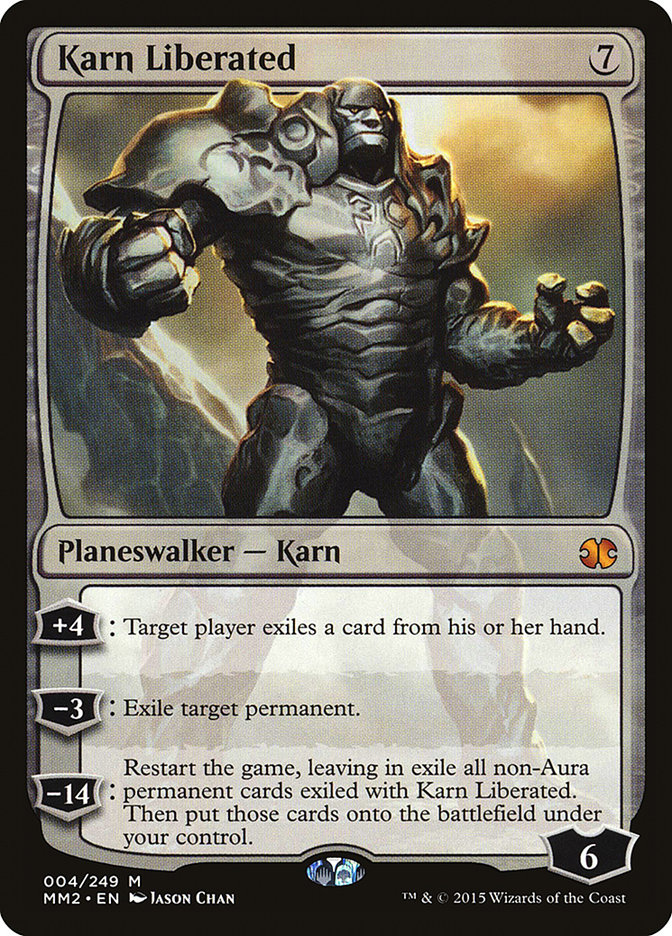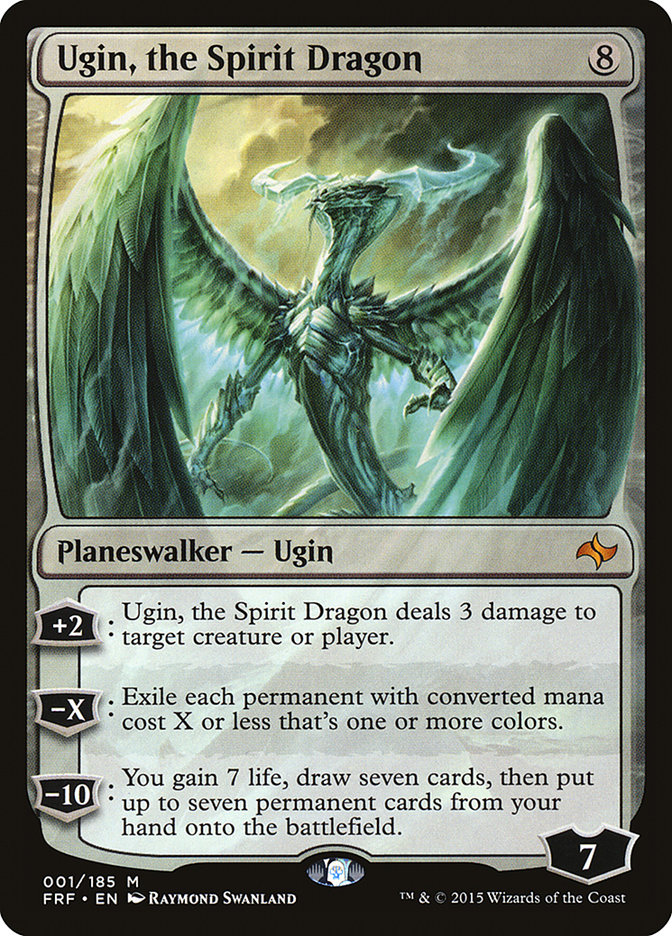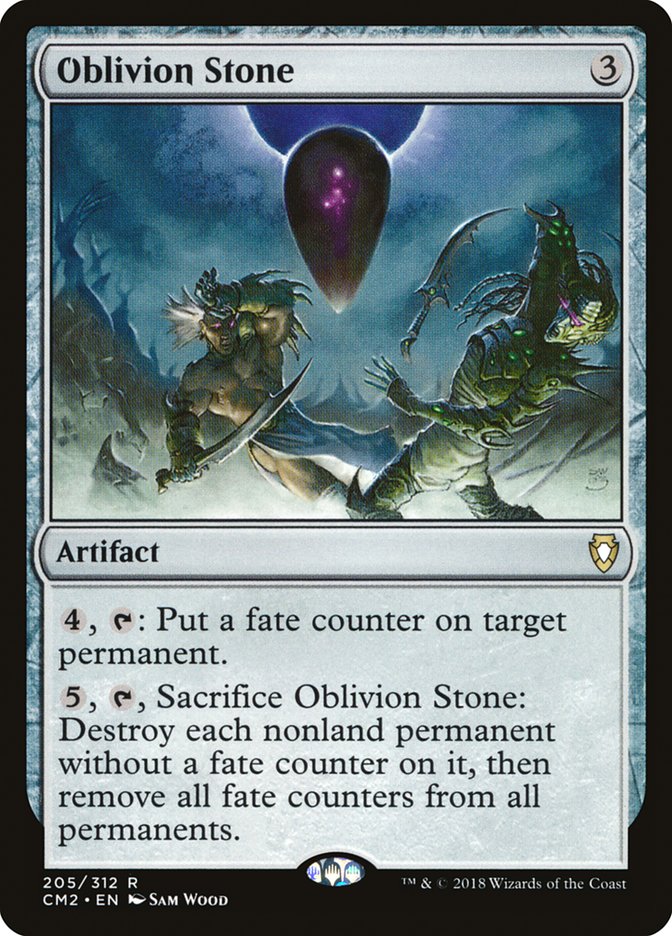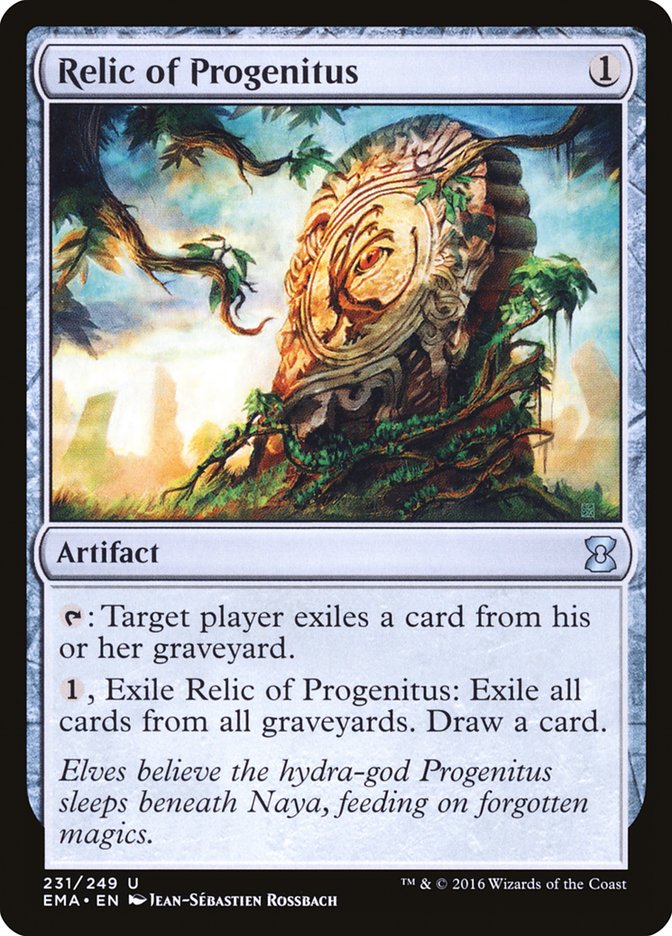Sad news out of the Modern Grand Prix in Las Vegas last weekend: Tron’s
back at the top tables.
Of course, this isn’t really news per se. Classic Tron variants
are excellent against the Jeskai-esque decks that have risen as a reaction
to Humans and as a result the last few weeks has had plenty of chatter
about this being the time to Tron once again. I know my testing group for
the #SCGINVI
considered Tron to be a viable option for that tournament and the results
from Vegas seem to agree with us.
Honestly, this isn’t just not news: it’s not really sad either. I
shouldn’t be saying this, as I am a Jund player and hating Tron is in my
contract, but I actually enjoy playing against Green Tron. Don’t get me
wrong, the matchup is quite bad for my Jund deck, but not as bad as
everyone seems to think.
In my experience, Tron gets something of a bad rap among Magic players. It
has a reputation for just not fostering good games of Magic. I disagree,
but I understand how this idea came to be. When your game plan is to win
with seven and eight mana spells while your opponent is playing three and
four mana spells, your games tend to look very one-sided. It certainly
doesn’t help that Tron’s matchups also tend to be rather polarized.
As a result, a lot of players, especially those with bad Tron matchups,
don’t put a lot of thought into how they should play their cards against
Tron. Sure, they’ll pack some hate in the sideboard and hope to draw it and
win the game on the spot, but past that they just hope that Tron has a very
bad draw or that they have a very good one. They don’t expect close games,
they don’t notice close games, they don’t win close games.
Those close games do exist however, and learning to win them is the first
step in finding Tron to be an enjoyable matchup instead of a hated one. No,
nothing you read below is going to flip your 20-80 Tron matchup on its
head, but it will let you collect your full 40% equity in the match and
give you something to think about in-game other than how you’re going to
phrase your bad beat story after the round.
Stage One: Assembly
It’s time to put games involving Green Tron under the microscope and see
what makes them tick. But first, a look at the enemy:
Creatures (8)
Planeswalkers (6)
Lands (15)
Spells (31)

The first stage of the Tron game plan is very simple: assemble Tron.
Make no mistake, the Green Tron deck is very good at assembling
its Tron pieces. This stage of the game doesn’t usually last very long.
Between Expedition Map, Sylvan Scrying, Ancient Stirrings and just simply
drawing Tron pieces, turn three Tron isn’t an unlikely outcome. Plan for
them to assemble Tron on three and breathe a sigh of relief when they play
a Forest instead.
The entire purpose of the Tron deck is to assemble Tron. They don’t really
have any options to play with until they accomplish that goal. This means
that for the first few turns of the game, your Tron opponent can’t really
interfere with anything you want to do. This presents you with quite the
opportunity, but what are you supposed to do with it?
The easy answer is “win the game,” but the decks that can do that aren’t
the ones with bad Tron matchups. If you’re Infecting or Storming, by all
means rely on the A-plan of ending the game on turn three, but the rest of
us are going to have to figure something else out.
It’s pretty reasonable to think that one of your priorities while in the
Assembly stage should be to stay in the Assembly stage. After all, you rule
this stage of the game. If you can keep your Tron opponent from ever
leaving it, you’ll easily win the game. What could go wrong?
Well, the thing that could go wrong is that you fail to keep the game in
the Assembly stage and spend so many of your resources in your failed
attempt that you are unable to compete in the next stage. This could be
written-off as a reasonable risk if your mission had any chance whatsoever
of succeeding. Unfortunately, it doesn’t.
That’s the frustrating thing about land-based decks: they don’t have very
many reliable points of interaction. Sure, you can Logic Knot their Sylvan
Scrying or Thoughtseize their Expedition Map, but their deck is built to assemble Tron and your deck is not built to stop them
from doing so. Once the lands are on the battlefield there’s nothing you
can do about them pre-board and very little post-board.
That’s not to say that you should never try and disrupt their assembling
Tron, just that your goal should be to delay it, not to stop it. There is a
lot of value to be had in getting an extra turn before they assemble Tron,
but realize that an extra turn is what you’re getting, not a game win.
You have to learn to think in turns against Tron. The strength of the Tron
deck is in assembling turn three Tron and stopping them from doing that is
a big deal. But not all points of interaction will net you that extra turn.
Take a look at this Tron hand:


If you were Thoughtseizing this on the play, what would you take? Assume
that the context of your hand makes delaying Tron until turn four better
than fighting them over Karns.
If your goal is to delay their Tron, the correct take is Expedition Map.
Both Map and Sylvan Scrying can find them their missing Tron piece, but
casting Sylvan Scrying will force them to play their Forest. Any non-Tron
land drop they make in the first three turns delays their Tron assembly by
a full turn. Similarly, sometimes you’ll find yourself taking Chromatic
Star or Sphere in a hand chock-full of Sylvan Scryings and Ancient
Stirrings to deny them access to green mana unless they take the time to
play a green land.
So delay their Tron if you can, but if the delay isn’t a full turn, it’s
probably not worth it. Forcing the play of a non-Tron land is a good way to
guarantee you get a full turn of delay. Making them find the last Tron
piece and play it in a single turn also counts as delaying for a turn, as
they won’t have access to all of the Tron mana until the following turn.
Past delaying Tron, your goal is to setup to win the game. This means
preparing for the big spells they will inevitably cast, putting them under
as much pressure as possible, and setting yourself up for future success.
This is the time where you have a little bit of breathing room, so cast
your creatures and play your cantrips.
I’ve talked a lot about how to delay Tron in this phase, but I don’t want
to send the wrong message: establishing a clock is the most important thing
you can do in this stage. In the Jund versus Tron matchup, Tarmogoyf is a
better card than Fulminator Mage, and it would be better than Blood Moon or
Damping Sphere if I were to play them. Don’t get so preoccupied with
delaying them that you forget to ensure you have anything going on to
benefit from the delay.
That last point speaks to why you so often hear about Blood Moon not being
that good against Tron. It’s not that Blood Moon’s bad; it’s that it’s the
second-most important piece of the puzzle. Beating Tron involves pressure
and disruption, and while Bloon Moon is all the disruption you could ever
want, it’s not even a little bit of pressure. If you value no-pressure
Blood Moon hands too highly, you will find yourself easily losing to ‘fair’
Karn Liberateds and Wurmcoil Engines.
Weak Tron, Strong Tron, and the Tron Catch-22
After Tron is assembled, the game enters the Weak Tron stage. This stage is
characterized by the Tron player having access to Tron, but not much more.
Most of their spells are online, but Ulamog, the Ceaseless Hunger is still
off the table and if they want to cast one of their big spells, they aren’t
really accomplishing anything else that turn. To me, this stage is the meat
of games against Tron. I spend most of the Assembly stage preparing for
this one, and most of this one trying desperately to not let the game move
on to the next one.
Strong Tron is the final stage, and it’s characterized by the Tron players
ability to do basically whatever they want. They have excess Tron lands on
the field, can cast every spell in their deck, and can even double spell
with their giant monstrosities. If they ever do that, you’re probably not
winning.
Ulamog, the Ceaseless Hunger aside, the main difference between the Weak
Tron and the Strong Tron phases is how much worse Tron plays off the top
during Weak Tron.
There’s a lot of good reasons that the Tron deck relies so heavily on
cantrips, but none stop you from punishing them for doing so. When Tron
only has access to seven total mana, it can’t draw a cantrip off the top,
use it and cast the Karn they find in the same turn. That is an exploitable
weakness.
During Weak Tron, answering their big plays should be at a relatively high
priority because you can realistically run them out of payoff spells and
then make real headway towards winning the game while they find more. The
fact that cantripping means they have to take a turn off casting real
spells is a huge part of this, it means their odds of drawing a payoff
spell off the top on the turn they need it are functionally much lower.
Once they get to Strong Tron, answering their spells becomes less
profitable. They are much more likely to find and play a new one next turn,
so this is the time of the game you should stop trying to attack down
planeswalkers and instead aim to get those final few points through.
I’ll say it one more time for the people in the back: more often than not,
the phase of the game you’re going to beat Tron is Stage Two: Weak Tron.
This means that you should be expecting them to hit you with one or two of
their big guns. That’s okay, these cards are beatable. You just have to
know how.
Let’s start with the posterchild for the Tron archetype: Karn Liberated.
Turn three Karn is the stuff nightmares are made out of for sure, but you
can wake up from nightmares and you can beat Karn.
Karn is most frightening on an empty battlefield and against a single
threat. The more threats you have on the battlefield, the worse Karn gets.
Simple, right? Well, there’s a problem:
If you overextend to beat Karn Liberated, you risk losing to Ugin, the
Spirit Dragon. If you underextend to hedge against Ugin, you likely will
struggle against the Karn. This is the Tron catch-22, and it’s a problem.
Of course, if the only cards involved were Karn and Ugin, I would tell you
to overextend all day every day. They don’t play four Ugins, but they sure
do play four Karns. Easy, right?
Not so fast. For the purposes of this catch-22 Oblivion Stone functions as
copies three through six of Ugin, the Spirit Dragon. Six is a lot
of ways to punish you for overextending, but how else are you supposed to
beat Karn?
The good news is that Oblivion Stone and Ugin both cost eight mana to
deploy and activate. That’s one more than Karn, and that one mana generally
translates into having to deal with Karn a whole turn before you have to
think about any of the sweepers. And if the card they have is Oblivion
Stone, hopefully you force them to get rid of their Karn as well.
In general, you don’t want to respect the possibility of Oblivion Stone or
Ugin if they are still two turns away. If they could come down next turn,
respect away, but if you’re guaranteed at least one turn cycle with your
threats, extending tends to be the right play. More often than not, losing
to Karn is not where you want to be.
On the Fragility of Tron
I’ve been playing against Tron with decks that can “never” beat Tron for
years now, and if there’s one thing I’ve learned, it’s this: victory is
always closer than it appears. Tron is a deck that relies on powerful
haymaker cards to win the game, and none of them provide any meaningful
advantage for the Tron player once the card itself is dealt with. This
means that no matter how dire the game state might look, if you can simply
bring it back to parity you will only be a few bricked draw steps away from
victory.
To demonstrate this, I want to share a real game I played against Tron in
an actual tournament a while back. You can find my tweet from the time
here
, but if you’d rather not click over to Twitter or simply find my
hand-drawn board state offensive, here’s a recounting:
My Tron opponent and I are solidly in the Weak Tron Stage of the game, and
my performance thus far has been dismal. I haven’t reduced their life total
at all, and they have now assembled Tron alongside a basic Forest and have
stabilized behind a World Breaker. Worse, they still have plenty of gas
left with both an Ugin, the Spirit Dragon and an Ulamog, the Ceaseless
Hunger waiting in their hand. My hand of Liliana of the Veil, Thoughtseize,
Terminate, Verdant Catacombs looks okay, but there’s one little problem: I
control no permanents.
Not even lands.
And I only have twelve life.
It’s hard to imagine being further behind in a game of Magic than having no
permanents against an opponent who has access to eight mana, two unbeatable
spells in their hand, and a three-turn clock in play, but I did in fact win
this game. Here’s how:
The first step, of course, was Thoughtseizing away that Ugin. Now our
opponent is two mana away from Ulamog, and we’ve created some potentially
bad draws for them, namely anything that isn’t a castable payoff spell or a
Tron piece. They find a Relic of Progenitus and my big break comes in the
form of getting to Terminate that World Breaker with Relic’s exile all
graveyards ability on the stack, dealing with the World Breaker for good.
With the battlefield clear of threats, winning from there was a simple
manner of buying some extra time with a Fulminator Mage to take them off of
Tron followed by a Liliana of the Veil who got to use her -6 ability in
short order to put the game firmly out of reach for my opponent.
In truth, the story behind how I was able to win that game is much less
exciting than the picture of the battlefield at my most dire moment. And
that’s kind of the point of this story: if winning from that far
behind was so mundane, how far away from victory can you ever really be
against Tron?


